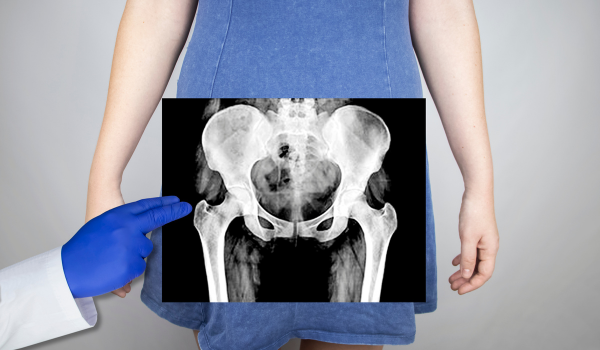.png)
Why Women Are More Affected
May-Thurner Syndrome (MTS) is a vascular condition caused by compression of the left iliac vein by the right iliac artery. This anatomical issue restricts blood flow, leading to symptoms such as leg swelling, pain, or deep vein thrombosis (DVT). Although MTS can occur in both men and women, women are disproportionately affected.
Several factors make women more vulnerable, including hormonal fluctuations, reproductive anatomy, and life stages such as pregnancy. Understanding these gender-specific risks is crucial for early detection and effective management.
Hormonal Influences
Hormones, particularly estrogen and progesterone, play a central role in the vascular system. They influence blood vessel tone, vein elasticity, and clotting behavior. For women, this hormonal activity can increase the likelihood of:
-
Vein dilation
-
Sluggish blood flow
-
Enhanced clotting tendency
High estrogen levels, such as those during certain phases of the menstrual cycle or while using hormonal contraceptives, can aggravate venous congestion—especially in an already compressed vein like in MTS.
Birth Control and MTS
Many women diagnosed with MTS are found to be using estrogen-containing birth control pills or patches. These forms of contraception can:
-
Increase clotting risk
-
Alter normal blood flow patterns
-
Exacerbate existing venous compression
Women with MTS or a family history of venous disorders should consider non-hormonal options or progesterone-only methods. Consultation with both vascular and gynecological specialists is key when choosing contraception.
Menstrual Cycle Fluctuations
Some women with MTS report worsened symptoms during certain parts of their menstrual cycle. These fluctuations are linked to:
-
Increased estrogen levels before ovulation
-
Water retention leading to swelling
-
Reduced vein tone due to hormonal changes
Tracking symptoms throughout the cycle can reveal patterns and help tailor treatment. Compression therapy and hydration may be particularly helpful during these times.
Pregnancy-Related Changes
Pregnancy significantly raises the risk of symptomatic MTS due to:
-
Increased blood volume (up to 50% more than baseline)
-
Hormonal changes that relax blood vessels
-
Pressure from the growing uterus on pelvic veins
-
Reduced mobility, especially in late pregnancy
These physiological changes can turn an asymptomatic compression into a full-blown DVT or chronic venous insufficiency. Many cases of MTS are first diagnosed during or shortly after pregnancy.
Risks During Pregnancy
Pregnant women with MTS are at increased risk of:
-
Deep vein thrombosis (DVT)
-
Pulmonary embolism (PE)
-
Chronic swelling and pain
-
Pelvic congestion syndrome
These risks are highest in the third trimester and the postpartum period. Preventive strategies may include compression stockings, mobility routines, and anticoagulation therapy under supervision.
Postpartum Considerations
Even after childbirth, the effects of MTS can persist or worsen due to:
-
Hormonal withdrawal and fluid shifts
-
Decreased activity during recovery
-
Clotting risk that remains elevated for 6–12 weeks postpartum
It’s essential to monitor for leg pain, swelling, or heaviness during this time. Early intervention can prevent long-term complications like post-thrombotic syndrome.
Pelvic Congestion Syndrome
Women with MTS may also develop pelvic congestion syndrome (PCS), where blood pools in the pelvic veins due to impaired outflow. PCS symptoms include:
-
Chronic pelvic pain, especially after standing
-
Pain during or after intercourse
-
Visible varicose veins on the buttocks or thighs
PCS is often misdiagnosed as gynecological pain. However, it is vascular in origin and can co-exist with May-Thurner Syndrome, especially in multiparous women (those who have had more than one pregnancy).
Varicose Veins and Aesthetic Impact
Women are more likely to develop varicose veins due to hormonal and pregnancy-related changes. In MTS, collateral veins may become prominent as blood tries to bypass the compressed area. This can lead to:
-
Bulging veins in the lower abdomen or thigh
-
Cosmetic concerns that affect self-esteem
-
Increased risk of vein rupture or skin changes
Compression therapy, sclerotherapy, or endovenous procedures can address both function and appearance.
Reproductive Health Implications
MTS and its complications can impact reproductive health by:
-
Delaying or complicating fertility treatments
-
Increasing risk during pregnancy
-
Affecting medication options (e.g., limiting hormone use)
For women undergoing fertility treatments or assisted reproductive technology (ART), pre-screening for MTS may help avoid complications like ovarian hyperstimulation syndrome (OHSS) or thrombosis.
Diagnostic Challenges in Women
Diagnosing MTS in women can be particularly challenging due to symptom overlap with:
-
Pelvic inflammatory disease (PID)
-
Endometriosis
-
Sciatica or back pain
-
Menstrual discomfort
This can lead to delays in proper care. Vascular imaging—like Doppler ultrasound, MR venography, or intravascular ultrasound (IVUS)—is essential when symptoms persist and other causes are ruled out.
Safe Imaging During Pregnancy
Pregnant women with suspected MTS may undergo special imaging techniques such as:
-
MR venography (without contrast) for safe evaluation
-
Doppler ultrasound to detect blood flow issues and clots
-
Limited use of CT venography when absolutely necessary
Careful coordination between obstetricians and vascular specialists ensures accurate diagnosis without compromising fetal safety.
Management Before and After Pregnancy
For women diagnosed with MTS before pregnancy, planning is vital. Management may include:
-
Preventive anticoagulation therapy
-
Use of compression garments throughout pregnancy
-
Regular vascular checkups
-
Limiting long periods of inactivity
Post-delivery, women should continue monitoring and treatment until clotting risk normalizes—usually around 12 weeks postpartum.
Treatment Options for Women
Treatment of MTS in women may involve:
-
Anticoagulants during and after pregnancy
-
Catheter-directed thrombolysis for acute DVT
-
Stent placement in the iliac vein for long-term relief
-
Pain management for PCS symptoms
Most procedures are minimally invasive and can be scheduled around the menstrual cycle or postpartum recovery.
Lifestyle Adjustments
Women living with MTS can benefit from:
-
Wearing compression stockings daily
-
Staying physically active, especially during pregnancy
-
Maintaining a healthy weight to reduce pelvic pressure
-
Avoiding high estrogen birth control methods
-
Practicing stress relief techniques to manage chronic pain
These steps help stabilize symptoms and prevent complications during various life stages.
When to See a Specialist
Women should seek evaluation for MTS if they experience:
-
Persistent left leg swelling or heaviness
-
Pelvic pain that worsens with standing
-
New or unexplained varicose veins
-
DVT symptoms during pregnancy or postpartum
A vascular specialist can perform the necessary tests and coordinate treatment with other healthcare providers.
Emotional and Mental Health Support
Living with a chronic vascular condition can be mentally taxing—especially for women balancing pregnancy, work, or childcare. It’s important to:
-
Seek counseling if anxiety or depression arises
-
Join support groups for women with MTS or DVT
-
Educate family members and partners about the condition
Mental health support is a vital part of long-term management.
Long-Term Outlook
With proper diagnosis, treatment, and lifestyle changes, most women with MTS lead normal, active lives. However, long-term monitoring is key to catching any complications early—especially after pregnancy, stent placement, or hormonal changes.
By staying informed and proactive, women can manage MTS through all stages of life.
Conclusion
May-Thurner Syndrome affects women uniquely due to hormonal cycles, pregnancy, and reproductive health needs. While the anatomical cause is the same in both sexes, the risks, symptoms, and treatment considerations differ greatly for women.
Understanding these gender-specific aspects leads to earlier diagnosis, more effective treatment, and better overall outcomes. Whether you're considering pregnancy, managing chronic pelvic pain, or dealing with DVT symptoms, don’t ignore what your body is telling you—especially if you're a woman at risk for MTS.

.png)
.png)
.png)
.png)
.png)
.png)
.png)
.png)



